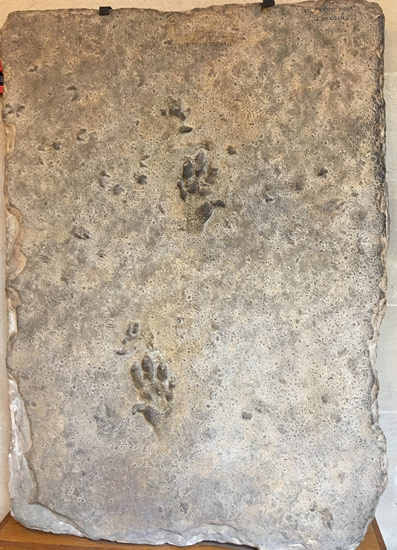Salting the Roads – A trip back over 240 million years
Rock Salt used to Grit Roads – Dating from before the Dinosaurs
In Britain the weather can be extremely unpredictable. Last August for example, allegedly part of the British summer, was recorded as one of the dullest months since weather records were instigated, it was very cloudy and there were few sunny days. In Cheshire, we had snow last year in April, but February turned out to be one of the sunniest and warmest on record. No wonder we Brits are obsessed with the weather.
Rock Salt
At the moment we are enduring a bit of a cold snap. Admittedly, our night time temperatures of -6 Celsius are nothing to complain about when we compare notes with friends and associates in Canada and other parts of the world. There are far colder places than the North-west of England, but after such a mild winter last year, this has still come as a bit of a shock to us. Gloves are very much the order of the day when we are in the warehouse packing the various dinosaur toys and gifts for customers and we do seem to be drinking more coffee. We have even had to grit the yard to prevent it becoming frozen and slippy. Many of the local roads are being gritted nightly by the council, in fact many hundreds of tonnes are being spread on roads and pavements to prevent accidents.
The grit that is being applied to many of the UK’s roads was probably mined in Cheshire, although Cheshire does not have the monopoly on providing grit or rock salt, there are also extensive mine workings in Cleveland in the North-east of the country as well as in Country Antrim in Northern Ireland. The grit is so called as it comprises of rock salt plus sand and other impurities as the rock salt was deposited in association with sands which formed sandstone.
Before the Dinosaurs
The grit that is spread on our roads that originates from Cheshire mines is approximately 245 million years old. It dates from before the time of the dinosaurs. The salt deposits were laid down during the Late Permian and Early Triassic when rising sea levels led to the encroachment of seawater forming large areas of shallow sea and salt marshes. At this time in the Earth’s history, the land that was to become the UK and Europe made up part of a huge land mass called Laurentia, a spur of the super-continent of Pangea. Britain was much nearer the equator and the shallow seas were surrounded by deserts (hence the sandstone deposits that dominate Cheshire’s geology).
Large Reptiles Roamed Cheshire Before the Dinosaurs Evolved

Chirotherium tracks on display at the Oxford University Museum of Natural History. Large tetrapods roamed Cheshire before the dinosaurs.
Picture credit: Everything Dinosaur
Slowly much of the area covered with sea was evaporated and huge areas of salt lakes and evaporites (minerals deposited from the evaporation of water) were formed. Some were eroded away as they remained on the surface, but other deposits were buried and these rock salt deposits are the source of the grit we use on our roads. Rock salt mining also occurs in Poland and Germany, so you can get an idea of the extent of the shallow seas that formed during this time.
The salt works as a freezing point suppressant, forming a brine on the road surface that prevents water turning to ice. This helps to prevent roads becoming icy and dangerous. In recent years, additives have been included to improve the adhesion of the rock salt on roads and pavements, but in essence when you drive over a salted road or walk along a salted pavement you are travelling over evidence of Britain’s geological history.
Much of the rock salt in Cheshire is just 50 metres below the ground, it forms a natural barrier for ground water and I am told that on quiet nights in parts of the Cheshire countryside which overlay the salt mines, you can hear the distant rumble of underground explosions as the mine workers blast the rock salt away.
Dinosaurs
Everything Dinosaur stocks a range of prehistoric animal models and figures. The range includes dinosaurs and numerous replicas of animals that lived in the Permian and the Triassic.
To visit Everything Dinosaur’s website: Everything Dinosaur.

